Pham H. Nguyen
Hybrid Soft Electrostatic Metamaterial Gripper for Multi-surface, Multi-object Adaptation
Mar 10, 2024



Abstract:One of the trendsetting themes in soft robotics has been the goal of developing the ultimate universal soft robotic gripper. One that is capable of manipulating items of various shapes, sizes, thicknesses, textures, and weights. All the while still being lightweight and scalable in order to adapt to use cases. In this work, we report a soft gripper that enables delicate and precise grasps of fragile, deformable, and flexible objects but also excels in lifting heavy objects of up to 1617x its own body weight. The principle behind the soft gripper is based on extending the capabilities of electroadhesion soft grippers through the enhancement principles found in metamaterial adhesion cut and patterning. This design amplifies the adhesion and grasping payload in one direction while reducing the adhesion capabilities in the other direction. This counteracts the residual forces during peeling (a common problem with electroadhesive grippers), thus increasing its speed of release. In essence, we are able to tune the maximum strength and peeling speed, beyond the capabilities of previous electroadhesive grippers. We study the capabilities of the system through a wide range of experiments with single and multiple-fingered peel tests. We also demonstrate its modular and adaptive capabilities in the real-world with a two-finger gripper, by performing grasping tests of up to $5$ different multi-surfaced objects.
A Soft-Bodied Aerial Robot for Collision Resilience and Contact-Reactive Perching
May 02, 2022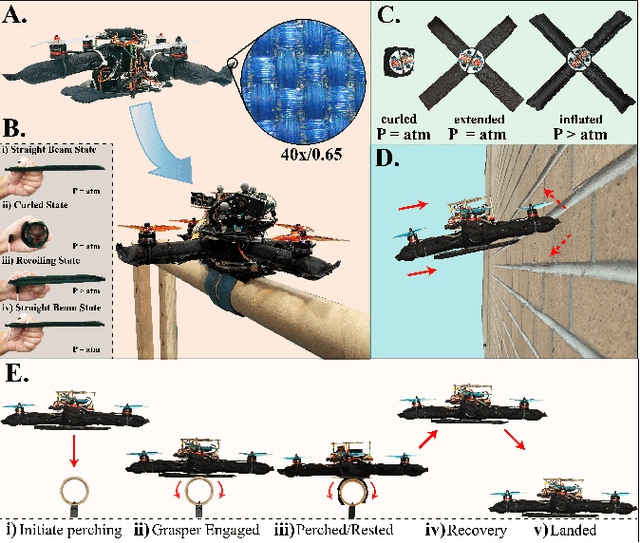
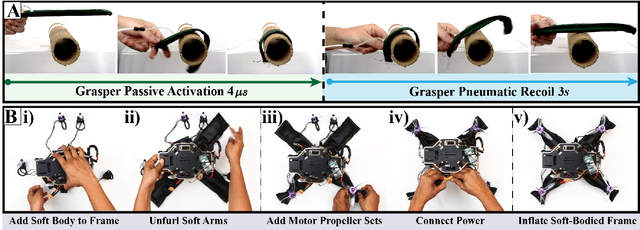
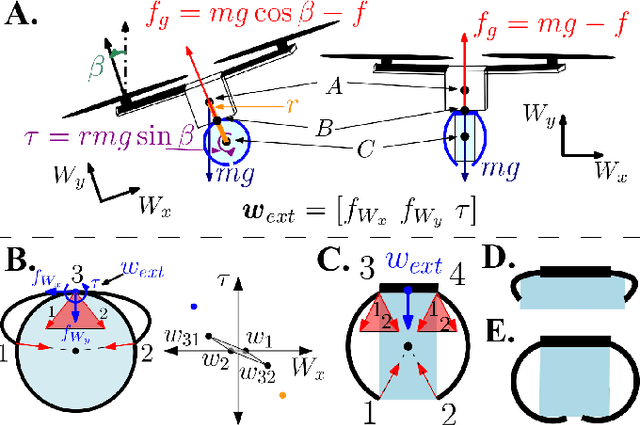
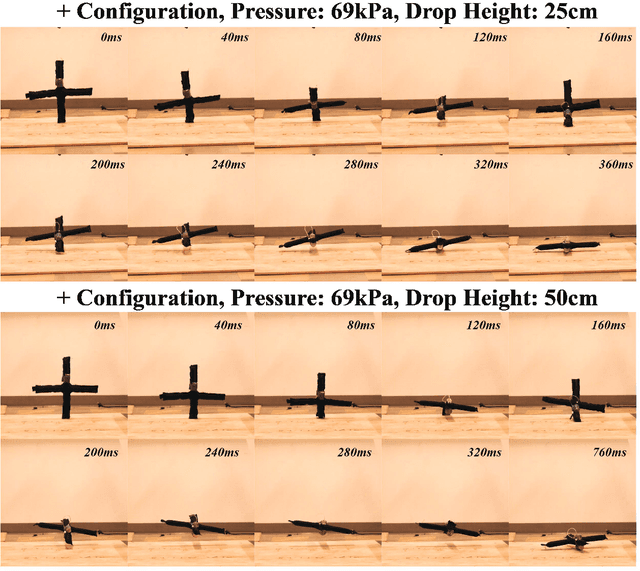
Abstract:Compared to their biological counterparts, aerial robots demonstrate limited capabilities when tasked to interact in unstructured environments. Very often, the limitation lies in their inability to tolerate collisions and to successfully land, or perch, on objects of unknown shape. Over the past years, efforts to address this have introduced designs that incorporate mechanical impact protection and grasping/perching structures at the cost of reduced agility and flight time due to added weight and bulkiness. In this work, we develop a fabric-based, soft-bodied aerial robot (SoBAR) composed of both contact-reactive perching and embodied impact protection structures while remaining lightweight and streamlined. The robot is capable to 1) pneumatically vary its body stiffness for collision resilience and 2) utilize a hybrid fabric-based, bistable (HFB) grasper to perform passive grasping. When compared to conventional rigid drone frames the SoBAR successfully demonstrates its ability to dissipate impact from head-on collisions and maintain flight stability without any structural damage. Furthermore, in dynamic perching scenarios the HFB grasper is capable to convert impact energy upon contact into firm grasp through rapid body shape conforming in less than 4ms. We exhaustively study and offer insights for this novel perching scheme through grasping characterization, grasp wrench analysis, and experimental grasping validations in objects with various shapes. Finally, we demonstrate the complete control pipeline for SoBAR to approach an object, dynamically perch on it, recover from it, and land.
Fabric Soft Poly-Limbs for Physical Assistance of Daily Living Tasks
Mar 19, 2019

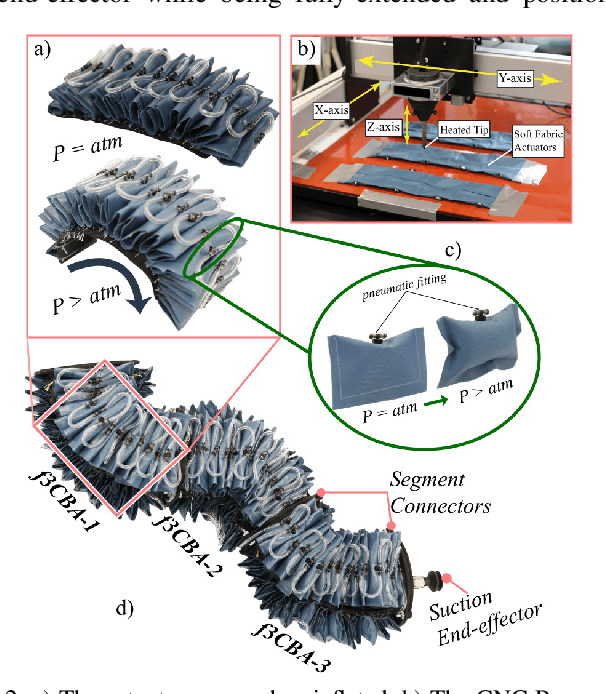

Abstract:This paper presents the design and development of a highly articulated, continuum, wearable, fabric-based Soft Poly-Limb (fSPL). This fabric soft arm acts as an additional limb that provides the wearer with mobile manipulation assistance through the use of soft actuators made with high-strength inflatable fabrics. In this work, a set of systematic design rules is presented for the creation of highly compliant soft robotic limbs through an understanding of the fabric based components behavior as a function of input pressure. These design rules are generated by investigating a range of parameters through computational finite-element method (FEM) models focusing on the fSPL's articulation capabilities and payload capacity in 3D space. The theoretical motion and payload outputs of the fSPL and its components are experimentally validated as well as additional evaluations verify its capability to safely carry loads 10.1x its body weight, by wrapping around the object. Finally, we demonstrate how the fully collapsible fSPL can comfortably be stored in a soft-waist belt and interact with the wearer through spatial mobility and preliminary pick-and-place control experiments.
 Add to Chrome
Add to Chrome Add to Firefox
Add to Firefox Add to Edge
Add to Edge